Useful Tips on Guitar Building
|
|
|
|
Building a guitar can be a rewarding endeavor. However, it requires careful planning and implementation to create a well-crafted musical instrument. The key things to remember are scale length, wood and materials to be used, and the finish and final construction. |
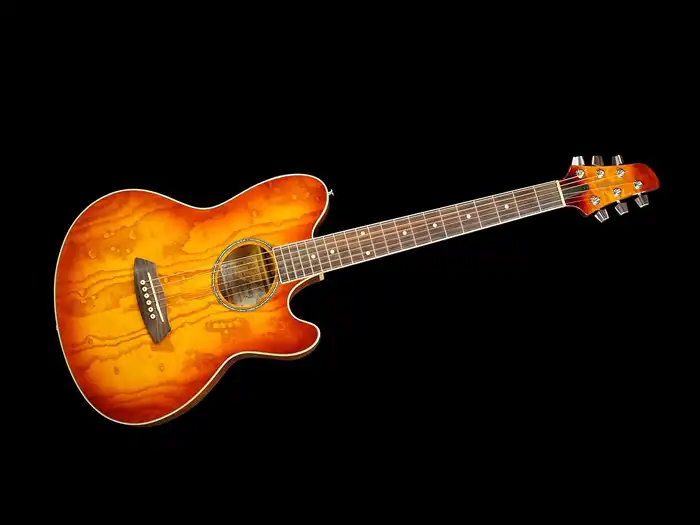
|
|
|
1) Scale Length and Design
|
|
The scale length is the distance between the guitar’s nut and the bridge saddles. The distance factors in the guitar’s tension (slack), intonation, and the playability of the guitar’s action. |

|
|
|
2) Common Scale Lengths
|
|
The common scale lengths are Fender 25.5 inch for Stratocaster and Telecaster, and 24 inch for Fender Jaguar and Mustang. Gibson has a 24.75 inch scale length and PRS Santana 24.5 inch scale length. |

|
|
|
3) Designs and Plans
|
|
Before beginning create a full scale drawing of the guitar including scale length, neck-to-body location, bridge placement and hardware cavities. |
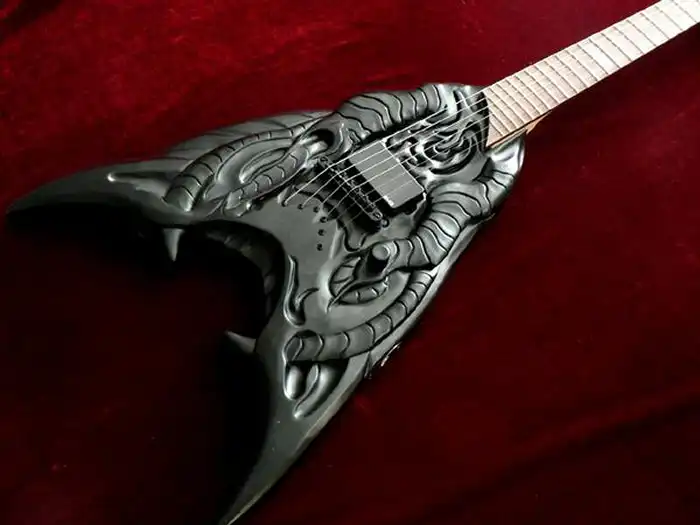
|
|
|
4) Wood and Materials
|
|
The wood used impacts the tone of the guitar. Different tonewoods like alder, ash, ebony, mahogany, maple, and rosewood have different tonal characteristics and different or best applications such as body, neck, or fretboard construction. Check out our Wood Guide. |
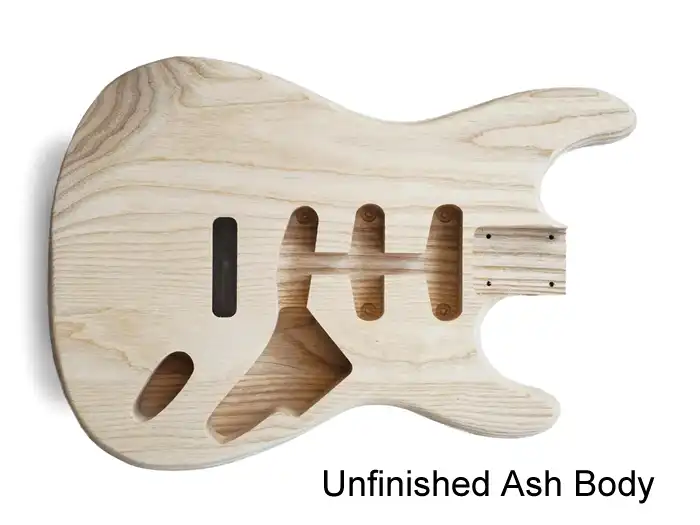
|
|
|
5) Wood Quality
|
|
Select high-quality dried wood that has acclimated to the workshop environment. Moisture content of wood should be roughly between 6 and 10%. |

|
|
|
6) Hardware and Electronics
|
|
Select electronics such as pickups, potentiometers, switches that align with your desired sound and other hardware like bridges and tuners that fit your budget. Remember good tuners are essential for tuning stability. Consider the better brands and do your research on products and their reviews before purchasing. |
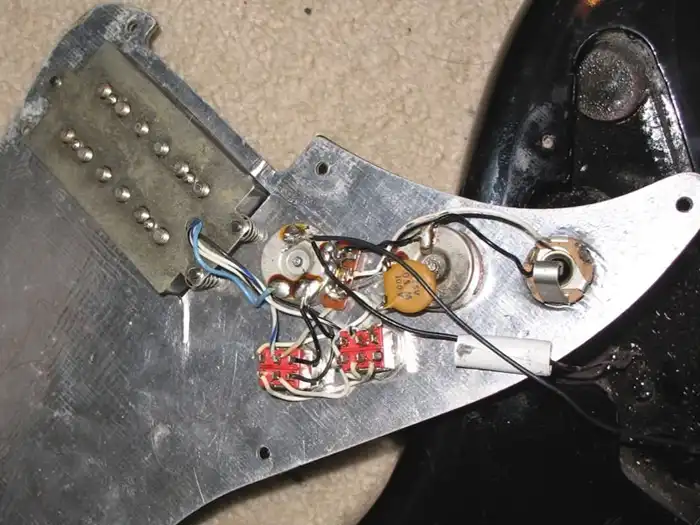
|
|
|
7) Construction Techniques
|
|
Use templates to ensure consistent and accurate routing of the body, neck pocket, and cavities. Avoid enlarging pickup cavities outside margins especially when there are thin edges. Gradually deepen your cuts after several router passes. Carefully plan the guitar neck pocket to achieve proper string clearance over the frets, checking the neck thickness and bridge height to get proper clearance. Accurately center the bridge based on the scale length and placement of the strings to ensure even alignment of the strings over the fretboard. |
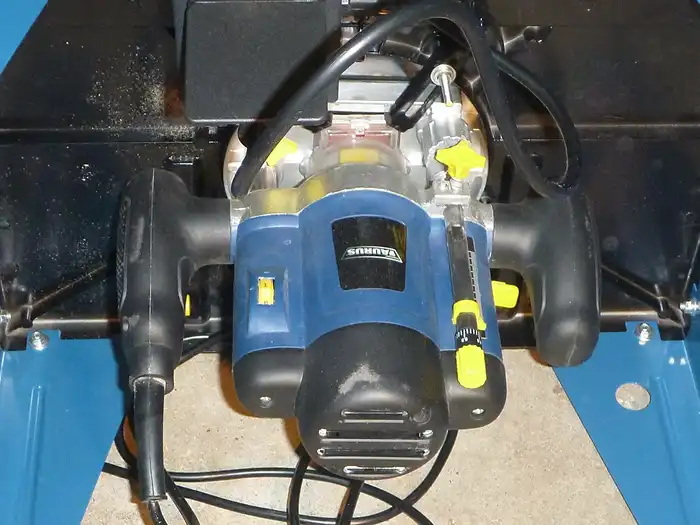
|
|
|
8) Finishing
|
|
Completely sand the body, neck and other wooden components to achieve a smooth service, gradually changing sandpaper grit size to facilitate proper finishing on a smooth surface. If applicable fill wood holes to create a smooth, level surface. Select the finishing method such as paint, stain, lacquer, polyurethane, etc. Wet sand and buff to achieve the desired finish. |

|
|
|
9) Assembly and Setup
|
|
When installing hardware, electronics, and pickups pay attention to wire shielding to minimize interference noise. Make sure the guitar is properly setup, by adjusting the neck relief with the truss rod, either bowed or flat as desired, setting string action height at the bridge saddles to ensure a comfortable action at the 12th fret, adjusting the nut slot grooves to ensure proper intonation and comfort at the lower frets, and finally setting the intonation so the 12th fret note matches open string pitch. |
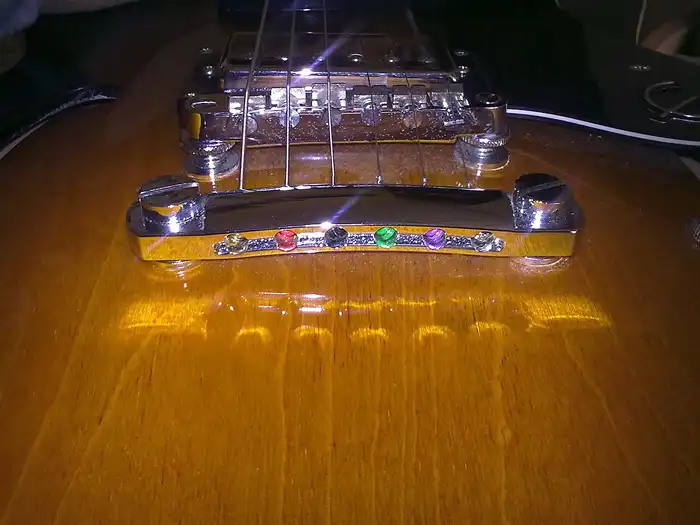
|
|
|
10) Important Considerations
|
|
The tools that are required are routers, saws, drills, files, sandpaper, clamps, and a soldering iron. There are many valuable resources online like YouTube tutorial guides. Remember building guitars is highly rewarding, but takes time, persistence and a bucketful of patience to create a unique instrument. |
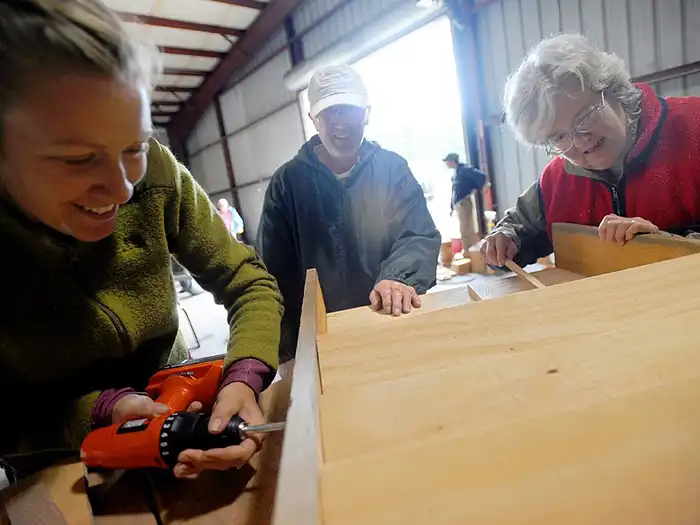
|










